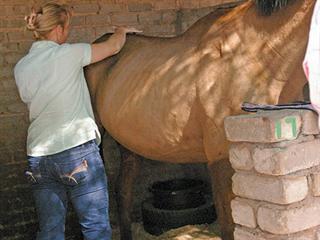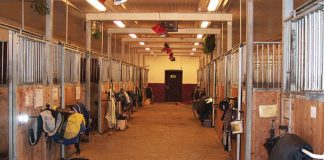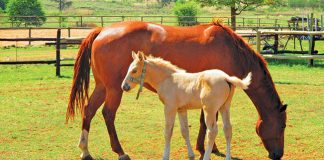
A horse’s body needs a break from time to time so that it can repair the wear and tear of a demanding schedule. There are many treatments available to help your horse achieve its best. Knowing what’s available and who to use is a personal choice. However, your vet is the best place to start.
After this, you could try chiropractic treatment, which mainly addresses problems originating in the back, neck and pelvis, and which may show up as a sore back, a subtle lameness, resistance or inability to reach the level of perfection so often required. In my experience, these discomforts usually develop after an injury or a poorly fitting saddle restricts motion in the spinal column. This leads to muscle spasms and inflammation.
How to do it
I palpitate the body and look for soreness, tight muscles and areas of restricted motion in the neck, back and pelvis. Joints with restricted motion are usually adjusted by applying hand pressure directly to the area in quick, firm thrusts. This type of treatment will not reverse existing damage, but I find that it can help to prevent further damage and make your horse feel more comfortable.
To find a chiropractor, get recommendations from your vet, trainer and others whose opinion you respect. Then watch the practitioner at work – your horse should relax during treatment and seem to enjoy it.Chiropractic treatment should not be used for fresh injuries with bruising and muscle damage, however, or if there is any chance that your horse has a fracture. Serious illnesses and injuries must always be treated by a vet.
Releasing stiffness
Massage and rolfing (developed by Dr Joyce Harman) are said to restore bone and joint alignment by releasing stiffness or fusion in connective tissue. Rolfing, or ‘structural integration’, is like massage in some ways and chiropractic in others. As with massage, it involves manual manipulation of soft tissue. Like chiropractic, it seeks to rebalance a horse’s structure. The body compensates for tension and injuries in ways that throw physical structures out of alignment. Fascia (connective tissue) becomes stiff or fused in places. Rolfing is said to release it and allow the body to align.
Three to five sessions of an hour to an hour-and-a-half should be enough. Sometimes, the symptoms seem worse after treatment starts as deeper problems surface. Once these are resolved, the horse is usually much better.
Phone Kim Dyson on 082 888 6511













